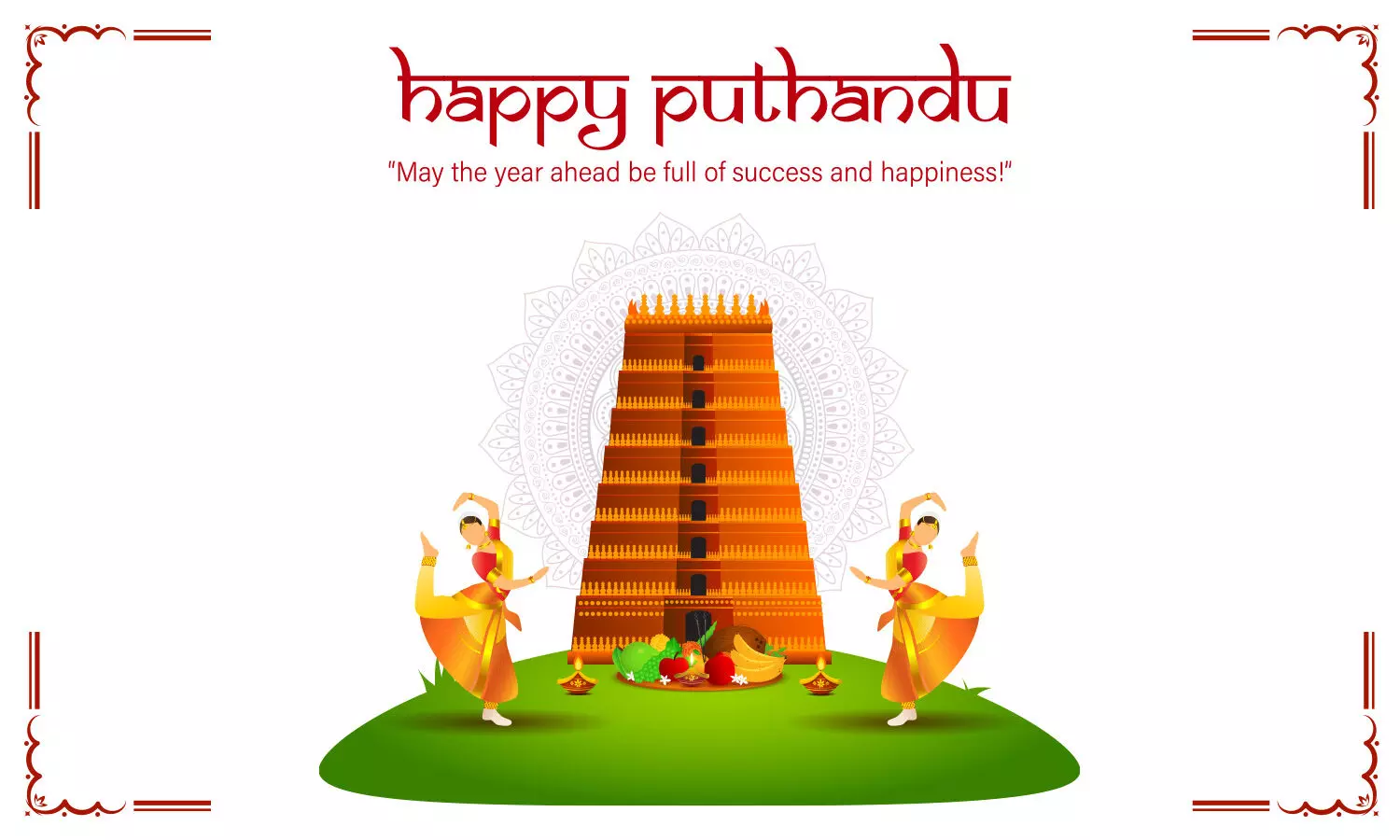Live
- They always want me to win, and now I feel lucky to have been offered a story like ‘Zebra’: Satyadev Kancharana
- ‘Democracy first, humanity first’: PM Modi in Guyana's parliament on two countries' similarities
- PKL Season 11: Telugu Titans register third straight win to top standings
- Is Pollution Contributing to Your COPD?
- NASA Unveils Underwater Robots for Exploring Jupiter's Moons
- Additional Central forces arrive in violence-hit Manipur
- AR Rahman and Saira Banu’s Divorce: Legal Insights into Common Issues in Bollywood Marriages
- 82.7 pc work completed in HPCL Rajasthan Refinery area: official
- Curfew relaxation extended in 5 Manipur districts on Friday
- Tab scam prompts Bengal govt to adopt caution over fund disbursement
Just In
All You Want to Know About Tamil New Year Puthandu


All You Want to Know About Tamil New Year Puthandu
Puthāaṇdu vāazhthugal! We hope that this New Year brings you all the best as you embark on exciting new adventures.
On this momentous occasion, it is normal for Tamilians to greet each other in this manner, so there's no need to be surprised. All they're trying to say is ‘Happy New Year!,’ Puthandu wishes.
The Tamil Nadu people celebrate the beginning of a new year with a festival called Puthandu, Puthuvarusham, or Varusha Pirappu. The name Puthandu comes from the words ‘new’ and ‘year,’ while the other variants include ‘year’ and ‘birth’ respectively. To be exact, it coincides with the Tamil solar calendar's first day of the month, Chithirai. This is the day Kerala celebrates Vishu. Vishu gives rise to the Bengali and Assam words, as well as the festival Bihu, which is also celebrated on the same day. Vaisakhi, also known as Baisakhi, is celebrated in northern India.
Tamil Nadu follows the Sauramana solar calendar. In this type of calendar, the movement of the sun serves as the foundation for calculating the time of year. Our forefathers used the day the sun passed exactly over the equator to mark the beginning of a new year. The word 'Vishu' is derived from Vishwadrutta Rekha, which means the equator, the line that divides the earth into two halves. This day is the equinox. In ancient times, the equinox was around April 14th. This difference is due to the precision of the equinox. Following this day, the sun moves northward, entering the northern hemisphere.
For those who follow the solar calendar, the sun's midpoint across both hemispheres was an ideal start to the New Year. It was a point of balance for finances, life, relationships, goals, and the higher self. Basically, people lived in harmony with nature. This is more important than ever today!
How do Tamils celebrate Puthandu, or Tamil New Year?
The entrances to houses are decorated with colourful kolams (beautiful designs drawn on the ground with rice powder). At the centre of the kolam is a kuthuvillaku, or lamp, which is lit to ward off the darkness of life. With the multicoloured flowers, the festive look is completed. Actually, the preparations begin one day before Puthandu. People declutter their homes by cleaning them out and getting rid of old and useless items, symbolically removing negative effects.
In front of the pooja room (prayer room), people place mangoes, bananas, jackfruit, raw bananas, and other seasonal vegetables on a tray/plate, along with rice, betel leaves, areca nuts, money (gold and silver jewellery and coins), flowers, and a mirror.
This collection of items placed on a tray or plate is considered auspicious. This is the first thing you will see (known as Kanni, or auspicious sight) when you wake up on New Year's Day. Mangoes and jackfruits are seasonal fruits that symbolise health; rice represents nourishment; money represents wealth and prosperity; and jewellery represents beauty and adornment. To express gratitude for their blessings and support, the elders in the house are presented with betel leaves. The mirror's purpose is to reflect and multiply all of life's positive aspects!
Essentially, it is a symbolic offering that honours our agrarian society while also welcoming everything that contributes to a healthy, happy, full, and endowed life. Wait, that's not all! There's more to look forward to! Children even receive New Year's gifts on this day. Now let us move on to even more exciting traditions: delicious delicacies!
The most important food prepared on Puthandu is Varusha Pirappu mangai pachadi. This pachadi is made with cut/sliced raw mango (sour), sweet jaggery, bitter neem leaves, tangy tamarind, and spicy red chillies. Essentially, it is to usher in a new year that will hopefully be full of all the tastes and flavours of life. As a result, we live a full and balanced life.
What about the traditional Tamil New Year's lunch?
Are you ready to smack your lips? You'll find a variety of mouthwatering dishes made with the freshest seasonal ingredients- Medhu/Ulandhu Vadai (fried savouries made of urad dal), Payasam (pal/milk, paruppu /jaggery and channa/Bengal gram dal), Poli (sweet rotis), Mango pachadi (sweet and sour mango side dish), Sakkarai Pongal (sweet Pongal), Kosambari (moong dal salad), Avial (mixed vegetable stew), Poosanikai Kootu (Pumpkin stew), Vazhakkai curry (raw banana curry), Cabbage poriyal (sautéed cabbage fry), Vepamboo rasam (Neem flower rasam), Aplam (thin, crisp flatbread), Manga Urgai (Freshly-made mango pickle), Neer mor (spicy buttermilk), Panagam (jaggery water with cardamom powder) and Curd.
Don’t forget to let us know how your Tamil New Year 2024 celebrations were!

© 2024 Hyderabad Media House Limited/The Hans India. All rights reserved. Powered by hocalwire.com






